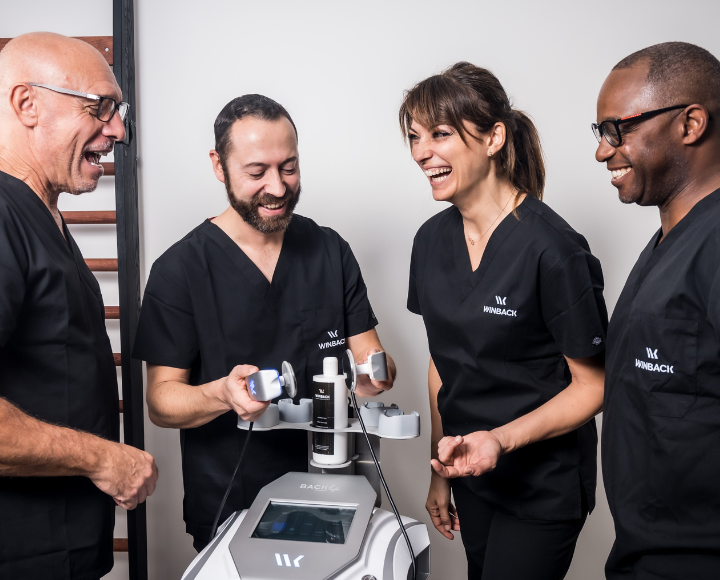Vaginal flange & Tecatherapy Winback
Clinical case: Winback tecartherapy in cases of vaginal flange
Our patient had an easy vaginal delivery 5 days ago, and a few stitches were needed to suture a small tear. On clinical examination during the consultation, a small skin, like a "false fold", was found located at the entrance of the vagina. The patient described no pain, but without immediate management, this flange could thicken and be responsible for intromission dyspareunia.
A high-frequency TECAR current session was proposed. To perform the session, the black convex electrode is used for 15 minutes at 20% TEC, sweeping the area of the scar. The result is immediate.
The repair of perineal lesions due to spontaneous tears, or during episiotomy, is often neglected at the time of suture, which can lead to long-term complications. A few weeks or months later, orificial dyspareunia, often related to a flange, may appear and treatment will most often be surgical, with a risk that the flange will reappear later. Healing is a process that allows a wound to close naturally through the power of regeneration of the body's own tissue cells.
The length of the process varies with each individual and its location, as a wound healing in the dermis will always be faster than a wound sutured under the dermis. The cells of the adjacent skin manufacture collagen fibrils from the 5th to the 15th day, constituting a network of more or less thick fibrous tissue. A perfect, normal scar would be supple to the palpation, without any "false folds" and without losing its elasticity over time.
Conclusion: monitoring of a perineal wound scar is essential. It is sufficient to advise the patient to carry out a few gentle massages to maintain the effect of the high frequency current session and not to hesitate to repeat it if necessary. Young women who have given birth are delighted and reassured, because after 1 to 2 sessions, resuming sexuality is no longer a fear.
Case study by Chantal Fabre-Clergue, midwife
Those posts may also interest you


